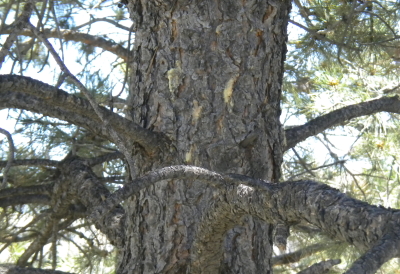Tiny beetle, giant threat
It should be as simple as digging a hole, planting a seedling and stepping back to let nature take its course. Millions of forested acres would lead you to believe that’s all it takes. But maintaining even the smallest version of a forest – like the two trees in your yard – requires basic scheduled care, especially to avoid damage by pests. Preventing beetle attacks has become a priority to many homeowners.
According to American Forests, “Across the [western United States], high-elevation forests are dying at an alarming rate. These forests’ five-needle pines, which are critical to sustaining vast and essential ecosystems, are witnessing an unprecedented level of threats.”
One of those threats is the mountain pine beetle, what National Geographic calls, “an enemy smaller than a thumbtack.”
Rising temperatures and more frequent drought periods stress pines to the point that they can’t fight off beetle attacks. Couple that with the extended beetle breeding periods also attributed to longer periods of warmer weather and the result is a beetle epidemic.
Measures to Prevent Beetle Attacks
Regular tree maintenance to boost your trees’ health can prevent beetle attacks and reduce the effects of a beetle infestation. Proper pruning and trimming, as well as watering and fertilizing when needed are good preventive (tree) health measures. Inspection of living trees on your property can determine important next steps, including treating your most valuable trees and trees under stress with a professionally applied spray pesticide. Dead trees should also be inspected to determine if their decomposition contributes to the eco-system or are harboring pine beetles. Dead and infested trees should be removed form the property.
Contact SprayTech, Colorado commercial and residential tree-spraying specialists, at 720-248-0000, for inspection of pine trees on your property and to discuss pine beetle treatment options.


